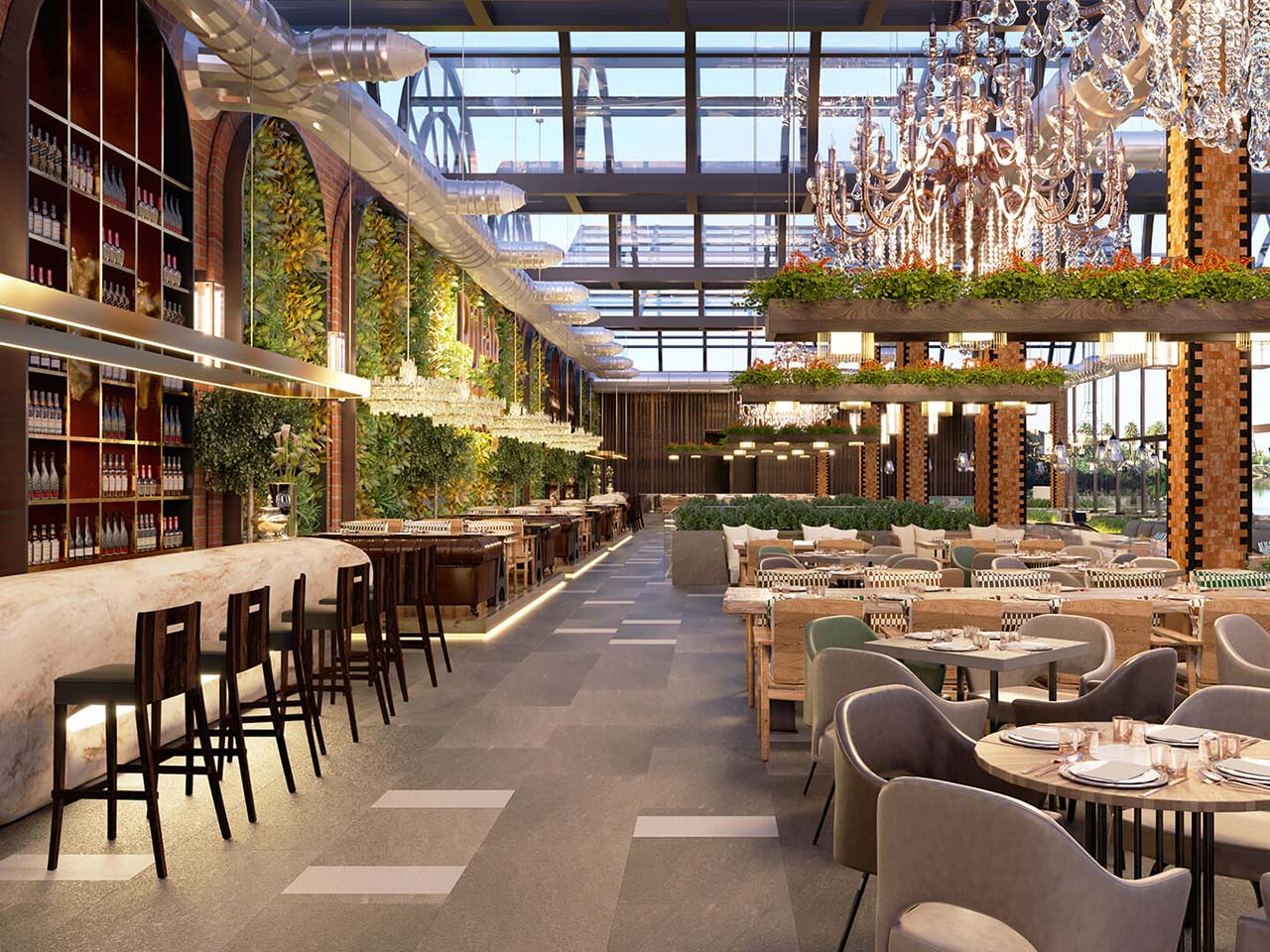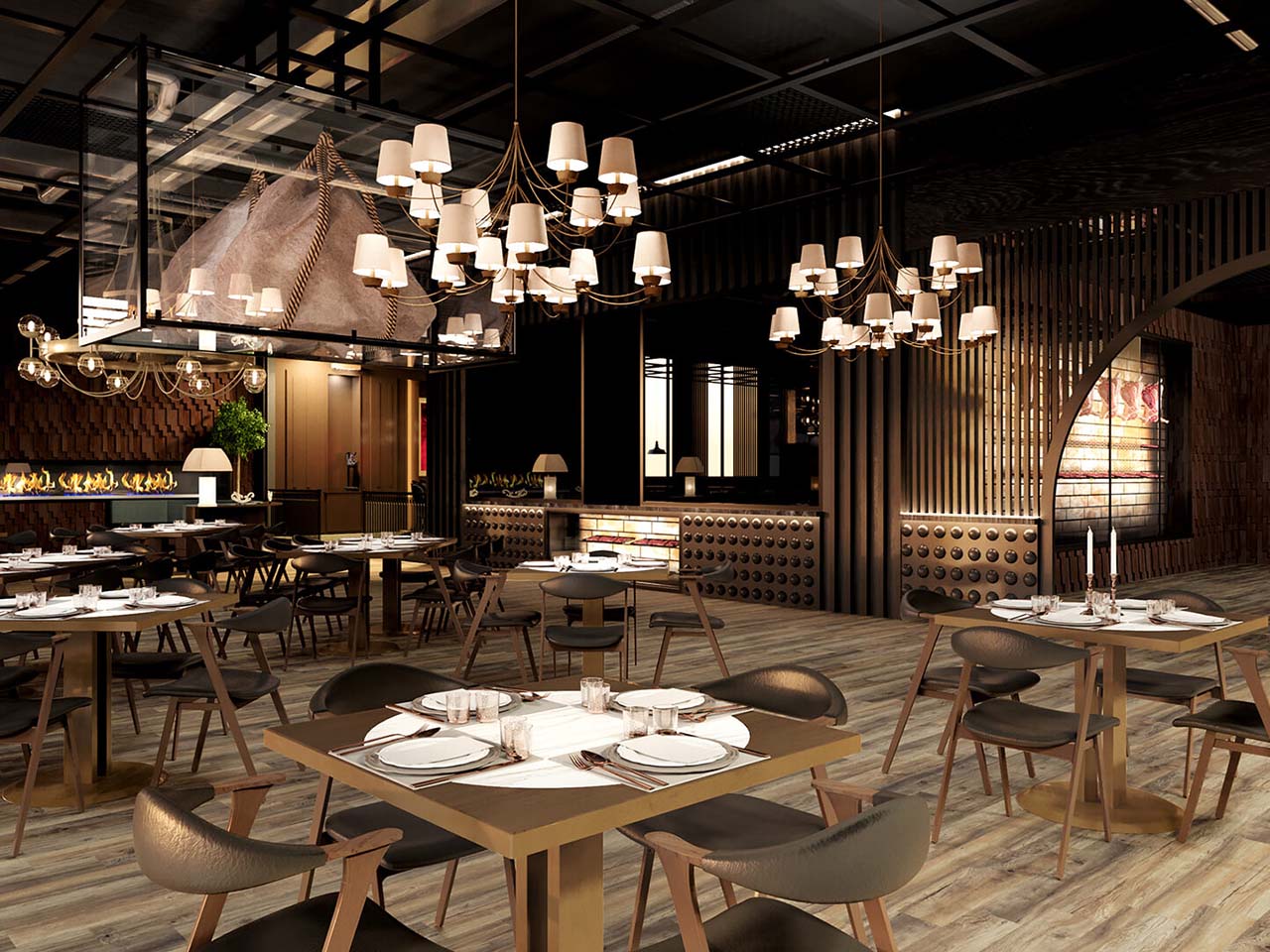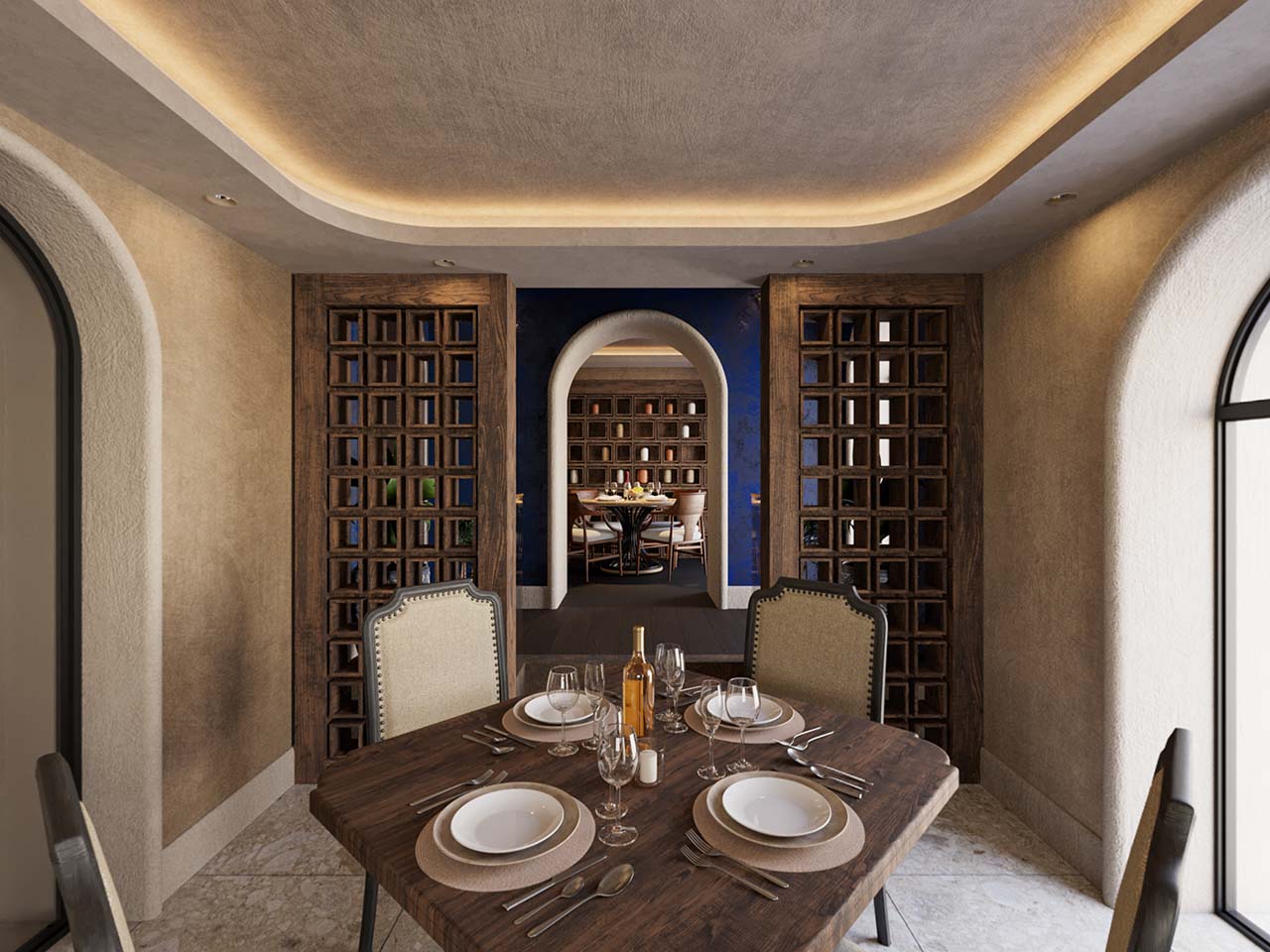Interior design and architecture play a crucial role in the success of a restaurant. The design and layout of a restaurant can greatly impact a customer’s dining experience and ultimately determine the success of the establishment.

A well-designed restaurant interior can create a welcoming and inviting atmosphere, making customers feel comfortable and encouraging them to stay longer. The use of color, lighting and textures can all contribute to the overall ambiance of a restaurant. For example, warm colors such as oranges and yellows can create a cozy and inviting atmosphere, while cool colors like blues and greens can give a more relaxed and calming vibe. Additionally, the use of natural light can make a space feel more open and inviting, while strategically placed lighting fixtures can be used to highlight specific areas of the restaurant.
The layout of a restaurant is also an important aspect of its design. The flow of the space should be functional and logical, making it easy for customers to navigate. The placement of tables, chairs, and other furniture should be well thought out in order to optimize the use of the space and ensure that customers have a comfortable and enjoyable dining experience. For example, placing tables too close together can make a space feel cramped and uncomfortable while spreading them out too far can make a space feel empty and uninviting.

Architecture also plays a role in the success of a restaurant. The exterior design of a building can greatly impact a customer’s decision to dine at a particular restaurant. A well-designed exterior can make a restaurant stand out and attract customers, while a poorly designed exterior can discourage potential diners. The use of materials, textures, and color can all contribute to the overall aesthetic of a restaurant’s exterior. For example, the use of natural stone or wood can give a building a rustic and inviting feel, while the use of metal or glass can give it a more modern and sleek look.
In addition to the design and layout of a restaurant, the use of sustainable and eco-friendly materials can also play a role in its success. More and more customers are becoming conscious of their impact on the environment and are looking for establishments that prioritize sustainability. Using environmentally friendly materials, such as reclaimed wood or low-VOC paint, can not only help reduce the impact of a restaurant on the environment but can also be a selling point for customers.
In conclusion, interior design and architecture play a crucial role in the success of a restaurant. A well-designed interior can create a welcoming and inviting atmosphere, while a well-thought-out layout can optimize the use of space and ensure that customers have a comfortable and enjoyable dining experience. The exterior design of a building can also greatly impact a customer’s decision to dine at a particular restaurant. Furthermore, the use of sustainable and eco-friendly materials can also play a role in a restaurant’s success as more and more customers are becoming conscious of their impact on the environment.



